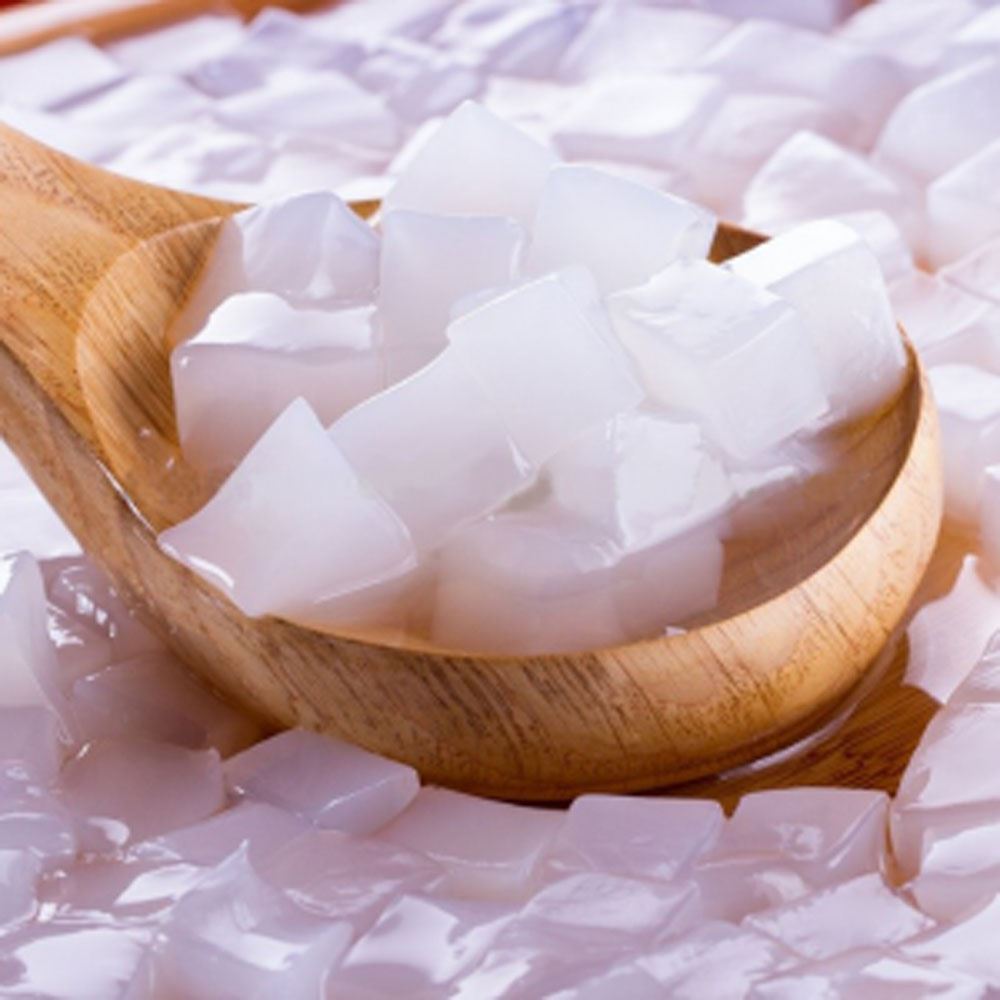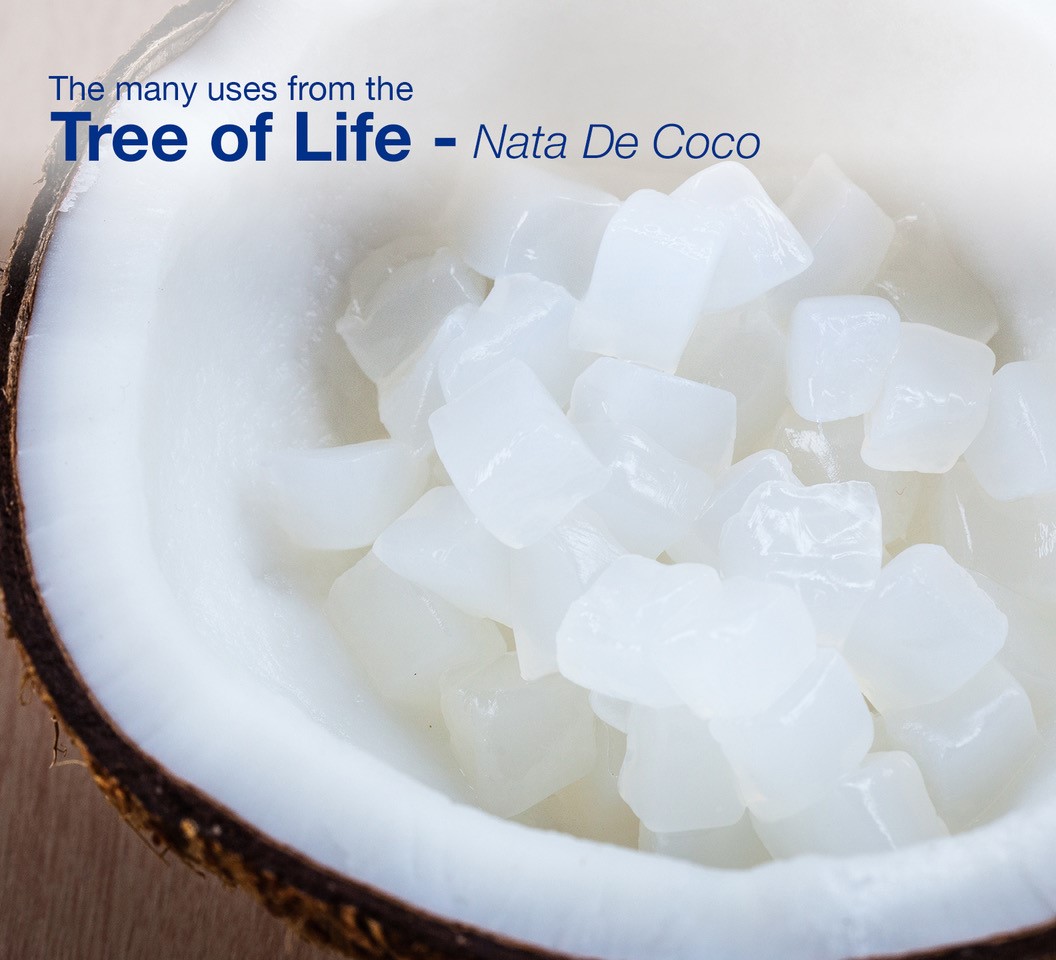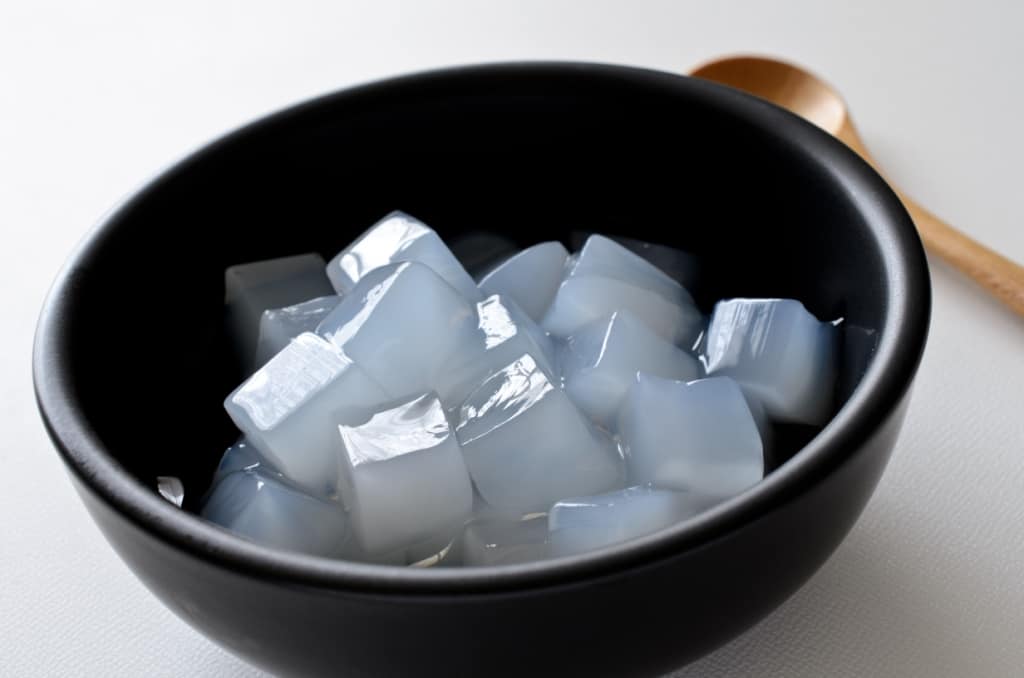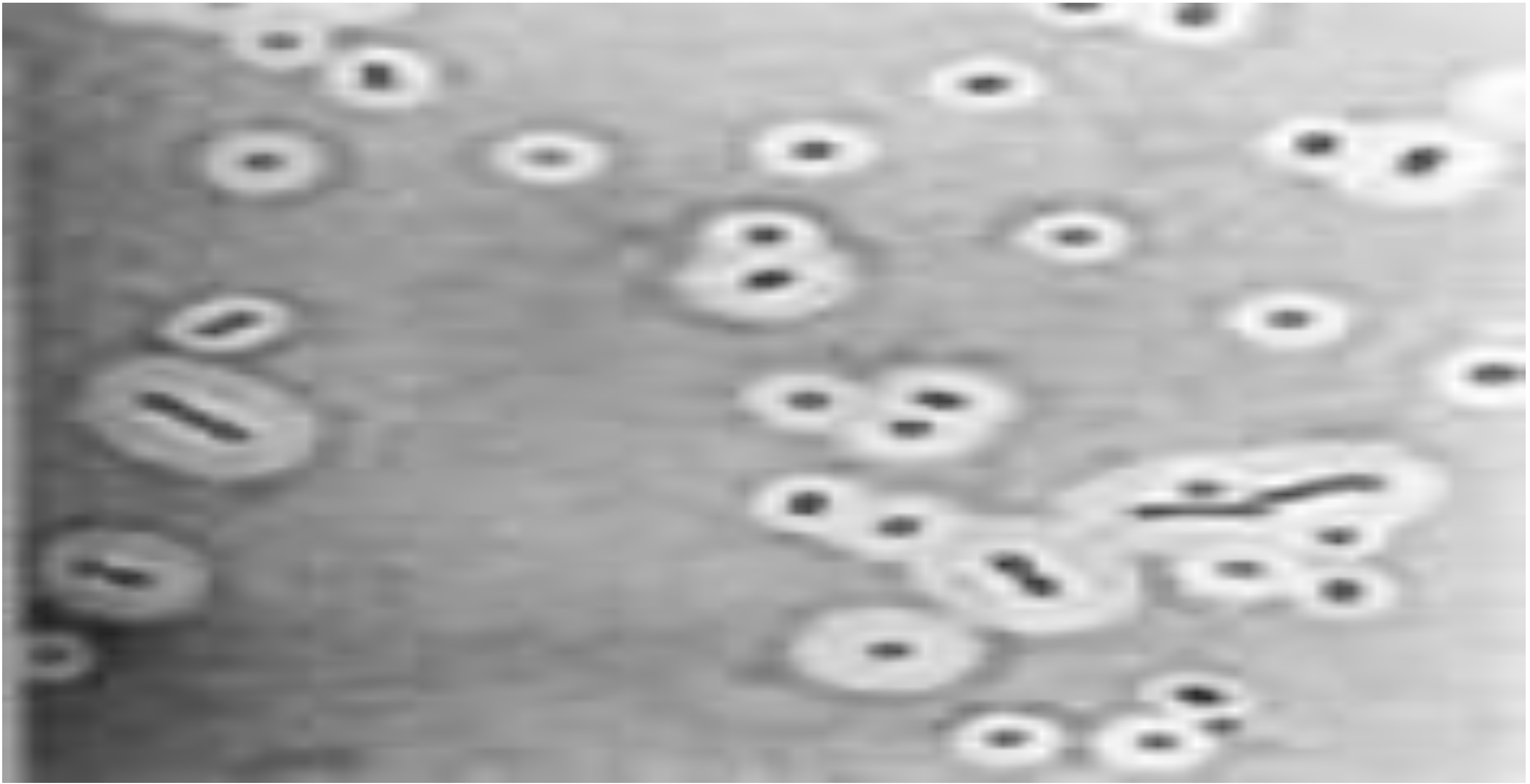Nata De Coco Dengan Pemanfaatan Acetobacter Xylinum Nata Acetobacter Xylinum Bakteri Proses Mysha
Coconut is a tree of life in Indonesia that offers many benefits to humans. One of the benefits of coconut is nata de coco, a food product made from fermentation of coconut water by acetobacter xylinum bacteria. This process produces a translucent, jelly-like substance that has a chewy texture. Nata de coco is a popular ingredient in desserts and drinks.
Nata de Coco - The Many Uses From the Tree of Life

Nata de coco is a versatile food ingredient that can be used in a wide variety of desserts and drinks. Some of the popular uses of nata de coco include:
- Adding it to fruit salads
- Mixing it with gelatin to create colorful desserts
- Incorporating it into smoothies and milkshakes
- Using it as a topping for ice cream and other desserts
Aside from its culinary uses, nata de coco is also used in the production of cosmetics and personal care products. Its moisturizing and exfoliating properties make it a popular ingredient in facial masks, soaps, and shampoos.
How is Nata de Coco Made?

The production of nata de coco involves several steps:
- Extracting the water from the coconut meat
- Filtering the coconut water to remove impurities
- Adding vinegar and sugar to the filtered coconut water to adjust the pH and create a suitable environment for bacteria growth
- Introducing the acetobacter xylinum bacteria to the coconut water and allowing it to ferment for several days to weeks
- Harvesting the nata de coco and washing it with water to remove any residual vinegar and sugar
- Sanitizing the nata de coco and packing it for distribution
The high sugar content in the coconut water serves as a food source for the bacteria, while the vinegar helps to lower the pH and prevent the growth of unwanted bacteria that could spoil the batch. The fermentation process results in the production of cellulose, a natural byproduct that gives nata de coco its unique texture and chewiness.
The Benefits of Nata de Coco

Nata de coco offers a number of health benefits, including:
- Low in calories: Nata de coco is a low-calorie food that can be a healthy alternative to high-calorie snacks and desserts.
- Rich in fiber: Nata de coco is a good source of dietary fiber, which can help improve digestion and promote feelings of fullness.
- May aid in weight loss: Because of its low-calorie and high-fiber content, nata de coco may help with weight loss by promoting a feeling of fullness and reducing the intake of high-calorie snacks and desserts.
- May improve gut health: Nata de coco contains probiotics, which are beneficial bacteria that can help improve gut health and boost the immune system.
- May help regulate blood sugar: Because of its fiber content, nata de coco may help to regulate blood sugar levels and prevent spikes in blood glucose after meals.
Overall, nata de coco is a healthy and delicious food ingredient that can be incorporated into a balanced diet. However, it is important to consume it in moderation, as it is still a source of sugar and calories.
The Science Behind Nata de Coco Production

The production of nata de coco is a complex process that involves the interaction of various microorganisms and biochemical reactions. Acetobacter xylinum, the bacteria responsible for nata de coco fermentation, produces and secretes cellulose, a complex carbohydrate that forms the jelly-like substance of nata de coco.
Cellulose is composed of chains of glucose molecules, and during the fermentation process, the bacteria produce and secrete enzymes that break down the glucose into simpler molecules that can be re-assembled into cellulose. The presence of vinegar in the fermentation medium helps to lower the pH and promote the growth of acetobacter xylinum, while the high sugar content provides a food source for the bacteria.
Once the fermentation process is complete, the nata de coco is harvested and washed with water to remove any residual sugar and vinegar. The resulting product is a translucent, jelly-like substance that can be used as a food ingredient or in the production of cosmetics and personal care products.
How to Make Nata de Coco at Home

If you're interested in making nata de coco at home, here's a simple recipe:
Ingredients:
- 2 cups of coconut water
- 1/4 cup of white vinegar
- 1/4 cup of sugar
Instructions:
- Mix the coconut water, vinegar, and sugar in a large bowl.
- Cover the bowl and leave it in a warm, dark place for 7 to 10 days.
- Check the nata de coco regularly to ensure that it is growing properly.
- Once the nata de coco has reached the desired size and texture, harvest it and wash it thoroughly with water.
- Use the nata de coco immediately or store it in the refrigerator for up to one week.
Making nata de coco at home can be a fun and rewarding experience, but it is important to follow the instructions carefully and to maintain a hygienic environment to prevent the growth of unwanted bacteria.
Where to Buy Nata de Coco Starter Culture
If you're interested in making nata de coco at home, you will need a starter culture of acetobacter xylinum bacteria. This can be purchased online or in specialty food stores. Look for a culture that is labeled specifically for nata de coco production.
When selecting a starter culture, make sure to check the expiration date and to follow the instructions carefully for storage and use. Improperly stored or handled starter cultures can lead to contamination and spoilage of the nata de coco batch.
The Bottom Line

Nata de coco is a delicious and healthy food ingredient that is popular in Indonesia and around the world. Its unique texture and chewiness make it a versatile ingredient that can be used in a wide range of desserts and drinks.
While nata de coco offers a number of health benefits, it is still important to consume it in moderation as it is a source of sugar and calories. Additionally, it is important to handle starter cultures carefully and to maintain a hygienic environment to prevent contamination and spoilage of the nata de coco batch.
If you're interested in making nata de coco at home or incorporating it into your favorite recipes, be sure to follow the instructions carefully and to enjoy it in moderation as part of a balanced diet.
Comments
Post a Comment